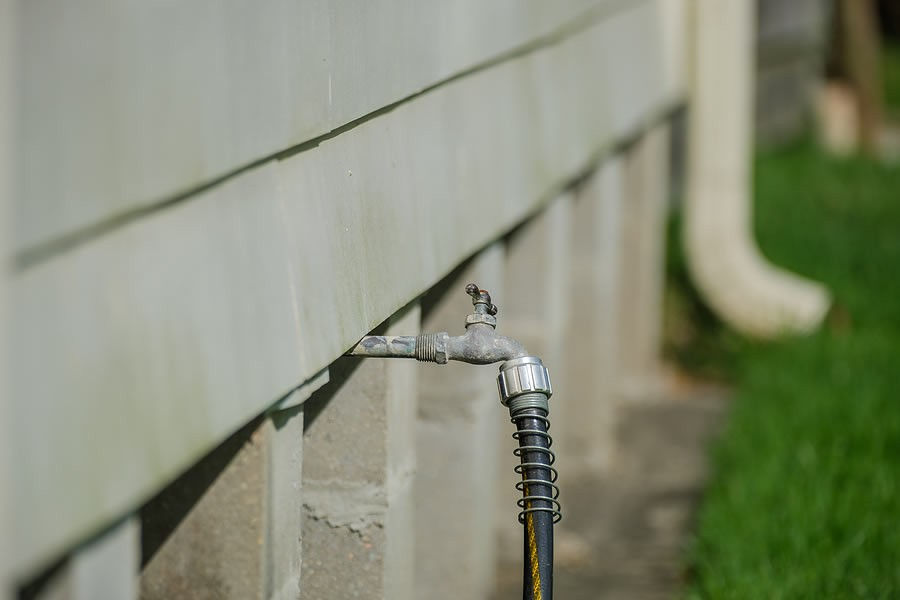Spring Plumbing Tip: Check Your Hose Bib for Damage
- forgachplumbing
- Jun 17
- 4 min read

As spring arrives and the weather warms up, it's the perfect time to tackle those plumbing tasks that have been on your to-do list. One often-overlooked area that deserves your attention is the hose bib, also known as the outdoor faucet. This small but crucial component can suffer significant winter damage, leading to leaks or even major plumbing issues as the gardening season begins. Checking your hose bib for damage this spring is essential for maintaining your home’s plumbing, and it's easier than you might think.
Understanding the Hose Bib
The hose bib is the exterior faucet that allows you to connect a hose for watering plants, washing cars, or other outdoor chores. Although designed to withstand the elements, harsh winter conditions can lead to frozen pipes, which may expand and cause cracks or breaks. In fact, studies show that over 20% of homeowners experience damage to their outdoor plumbing during colder months. This is why a simple inspection every spring is vital before you start your outdoor activities.
Signs of Damage to Look For
When checking your hose bib, pay attention to these important indicators of damage:
1. Leaks
Start by turning on the hose bib and watching for water dripping or pooling around the faucet. A leak can indicate a serious issue. For instance, small leaks can waste up to 20 gallons of water a day, contributing to higher utility bills.
2. Cracks
Examine the external parts of the hose bib for visible cracks or corrosion. These physical damages can lead to larger leaks, making it essential to repair or replace the faucet promptly.
3. Water Pressure
If you notice lower water pressure while using the hose bib, this may indicate a blockage or an issue within the connected pipe. According to plumbing experts, a drop in water pressure can lead to increased strain on plumbing systems.
4. Frozen Pipes
If pipes froze over the winter, check the hose bib for discoloration or bulging. These can be signs of potential damage within the walls that could lead to costly repairs down the line.
How to Inspect Your Hose Bib
You don't need extensive plumbing knowledge to check your hose bib. Follow this straightforward guide:
Gather Your Supplies
You will need:
A bucket or container to catch any leaks
Towels for drying
A wrench or pliers for tightening fittings
Replacement parts if needed
Turn Off the Water Supply
Before inspecting, turn off the water supply to avoid unexpected leaks. You can usually do this at the shut-off valve inside your home, often located in a basement or crawl space.
Visual Inspection
Start with a visual check. Look closely at the faucet and area around it for any signs of damage mentioned earlier.
Test the Faucet
Turn the hose bib on to check for leaks. Test it with a hose attached as well as without. Depending on what you find, you may need to make repairs.
Common Repairs
1. Tightening Connections
If you notice leaks where pipes connect, use a wrench to tighten the fittings. Often, this simple fix can resolve the issue quickly.
2. Replacing the Washer
If a leak persists, you might need to replace a worn washer. To do this, remove the handle, take out the old washer, and insert a new one. Reassemble the faucet carefully to ensure a tight seal.
3. Installing a Frost-Free Hose Bib
For areas prone to freezing temperatures, consider installing a frost-free hose bib. These faucets are designed to keep water from freezing back into the pipe, reducing your risk of winter damage by up to 70%.
When to Call a Professional
While many hose bib issues can be easily fixed, some situations may require a professional plumber. Seek help if you encounter:
Persistent leaks that don't resolve with simple fixes
Signs of major plumbing issues within your walls
A lack of tools or confidence to perform complex repairs
Preventative Measures for the Future
To prevent future damage to your hose bib, consider these measures:
1. Winterizing Your Hose Bib
As winter approaches, shut off the water supply and drain remaining water from the pipes. Adding an insulated cover will provide extra protection during colder months.
2. Regular Maintenance Checks
Make it a habit to inspect your hose bib at the start of every spring season. By catching issues early, you can save time and money.
3. Proper Hose Storage
Store your hoses properly during colder months to prevent damage. Keep them coiled and off the ground to facilitate drainage and avoid freezing.
Important Steps for a Healthy Plumbing System
As spring brings life and color to your garden, it also demands attention to the plumbing that supports your home. Your hose bib is crucial for outdoor activities, and ensuring it remains in good condition prevents inconveniences and costly repairs. By regularly checking your hose bib for damage, addressing any issues, and protecting it during winter, you help your plants thrive and keep your home safe.
Make it a yearly tradition to assess your plumbing components as the seasons change. This routine strengthens your home maintenance and fortifies your plumbing resilience as you step into the blossoming months ahead.




Comments